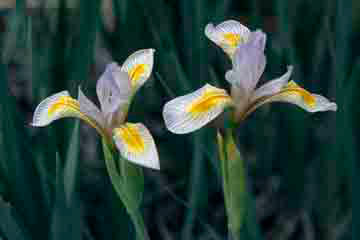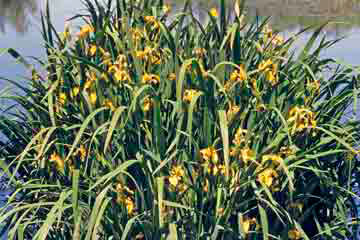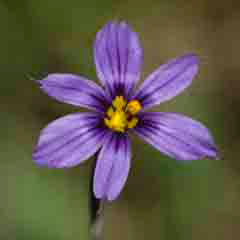Home | Next |
Previous | Index |
Purchase book
Idaho Mountain Wildflowers
(monocotyledons)
Iris Family, Iridaceae
The Iridaceae, a family with many colorful flowers, is appropriately
named for Iris, the Greek goddess of the rainbow. The family is made
up of sixty genera and 1,845 species world-wide. Many
Iridaceae—Gladiolus, Crocus, Freesia, Iris, and others—are
found wherever flowers are cultivated. Most are perennials, spreading by
bulbs and root-like stems (“rhizomes”) and by seeds. Usually there
are three bent back petal-like sepals (“falls”), and three erect
petals (“standards”) joined at their base to form a swollen floral
tube. There are three hidden stamens and three stigmas
which—confusingly—may take the shape and color of a petal. Leaves
are “equitant,” meaning that the sides of the longitudinally folded
leaves ride on either side of adjacent stems. The parallel-veined leaves
are otherwise typical of monocotyledonous plants in general. Three wild irises
are found in Idaho. One, not shown here, is Iris versicolor, the harlequin
iris, common in the northeastern states and provinces. A disjunct population
grows at the head of Priest Lake in Idaho’s panhandle; it is a rare
plant in Idaho.
 |
Western Iris, or Blue Flag, Iris
missouriensis Nutt. (left) looks like
a garden iris on a diet, blooming in late spring to mid-elevations along
the banks of slowly flowing streams and in moist meadows. Its color varies
from light to dark blue according to location. Meriwether Lewis collected
the plant on the Blackfoot River in Montana on July 5th, 1806. Only fragments
survived, so botanist Frederick Pursh could not publish a description. It
was again found by Nathaniel Wyeth in 1833 and described by Thomas Nuttall.
Not everyone is enchanted by this plant; it is classified as a weed in California
and Nevada.
Yellow flag, Iris pseudacorus
L. (right) was imported from the Old World as an
ornamental water plant. It is now quite at home in the New World, forming
spreading clumps in the shallow water of ponds and streams (this plant was
photographed in Blaine County’s Silver Creek). It is immediately
identifiable by its pale to deep-yellow flowers and its growth habit. The
yellow flag is also classified as a noxious weed in Nevada and
California. |
 |
 |
Idaho blue-eyed grass, Sisyrinchium
idahoense E. P. Bricknell
(left, right). The blue-eyed grasses are Iridaceae, with narrow, grass-like
basal leaves. A single flower on the end of a naked stem bears three
blue petaloid sepals and three matching petals with sharp-pointed tips.
In the past many sisyrinchiums were lumped into one species, more recently
they have been split into many. Blue-eyed grasses favor moist meadows and
stream banks. The name Sisyrhinchus was used by Greek natural historian
Theophrastus (372-287 BC) for an iris-like plant. |
 |
Home | Next |
Previous | Index |
Purchase book



